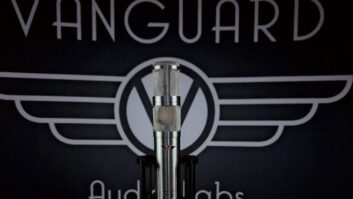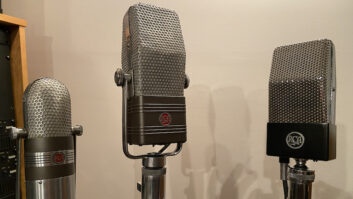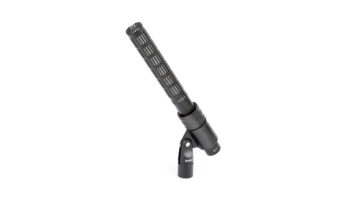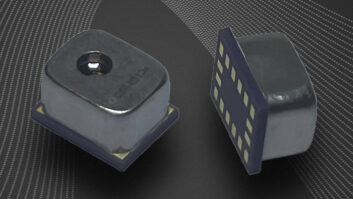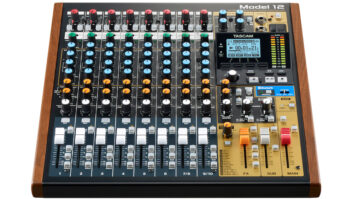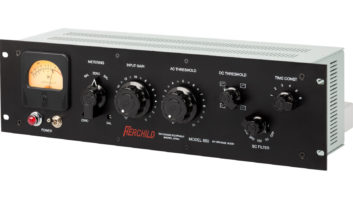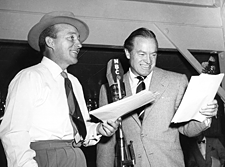
When engineers Les Anderson and Harry F. Olson joined RCA in 1928, talking motion pictures were the rage, radio was king and sound reinforcement systems were coming into their own. However, mics with any kind of true pattern control were nonexistent. Noting the earlier research of some Siemens engineers on replacing speaker voice coils with a metal ribbon design, the pair applied the ribbon approach to microphones, first with field coils and later with permanent magnets, resulting in the first ribbon mics (the PB-17 and PB-31), which offered the advantage of a bi-directional pickup pattern.
Bing Crosby (left) and Bob Hope working both sides of an RCA 44B
Photo: Courtesy Southern Methodist University Archives
In 1931, the PB-31 was replaced by the 44A, which was enormously successful and highly regarded for its smooth tone and defined pattern control, which not only reduced the effects of reverberation on soundstages, but also offered higher gain-before-feedback in live sound applications. The 44A was updated with improved magnetic material in the 44B/44BX models. RCA also launched the unidirectional 77A/77B models and the multipattern 77C/77D mics. Nearly three-quarters of a century later, all of these RCA ribbon models are still hard-working audio tools prized by engineers worldwide.


